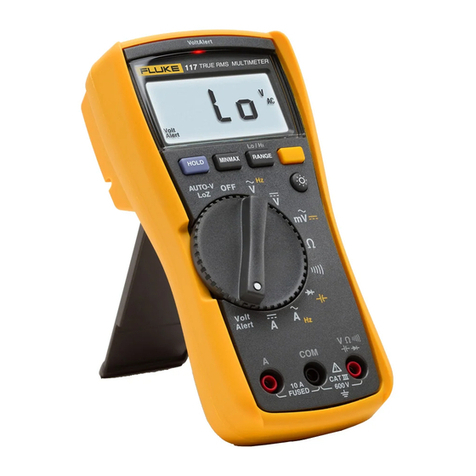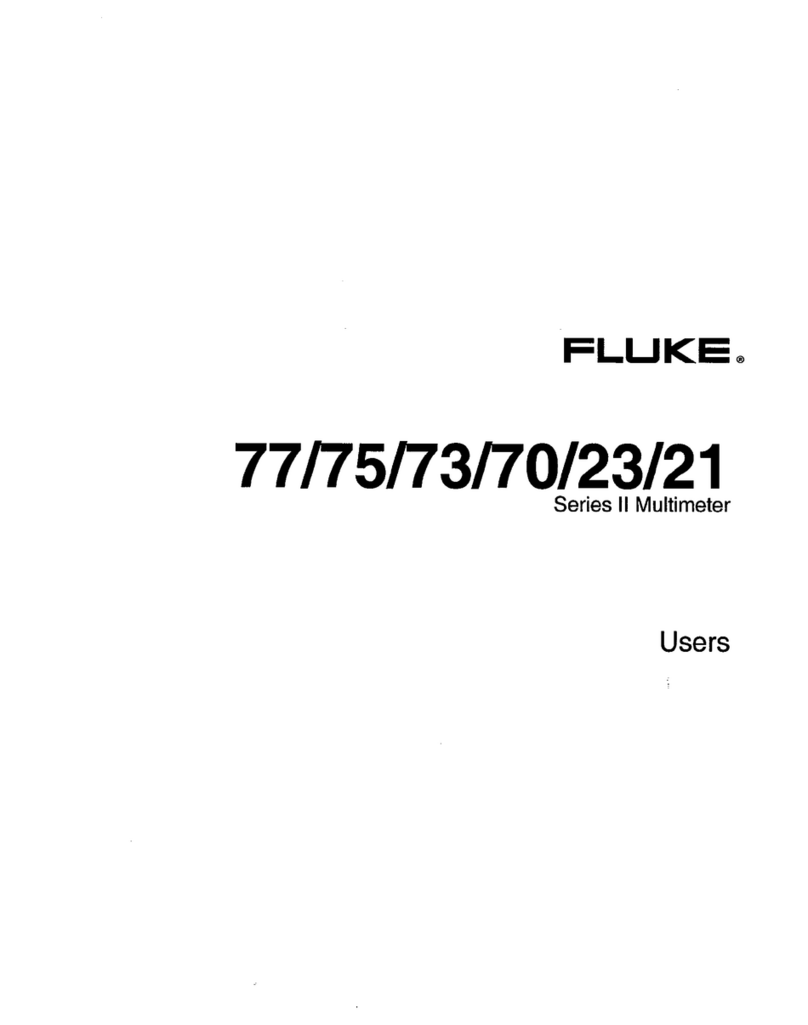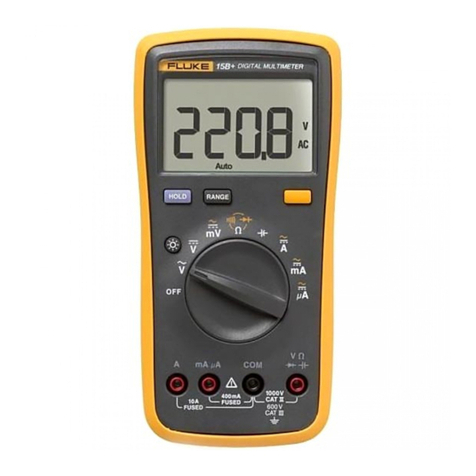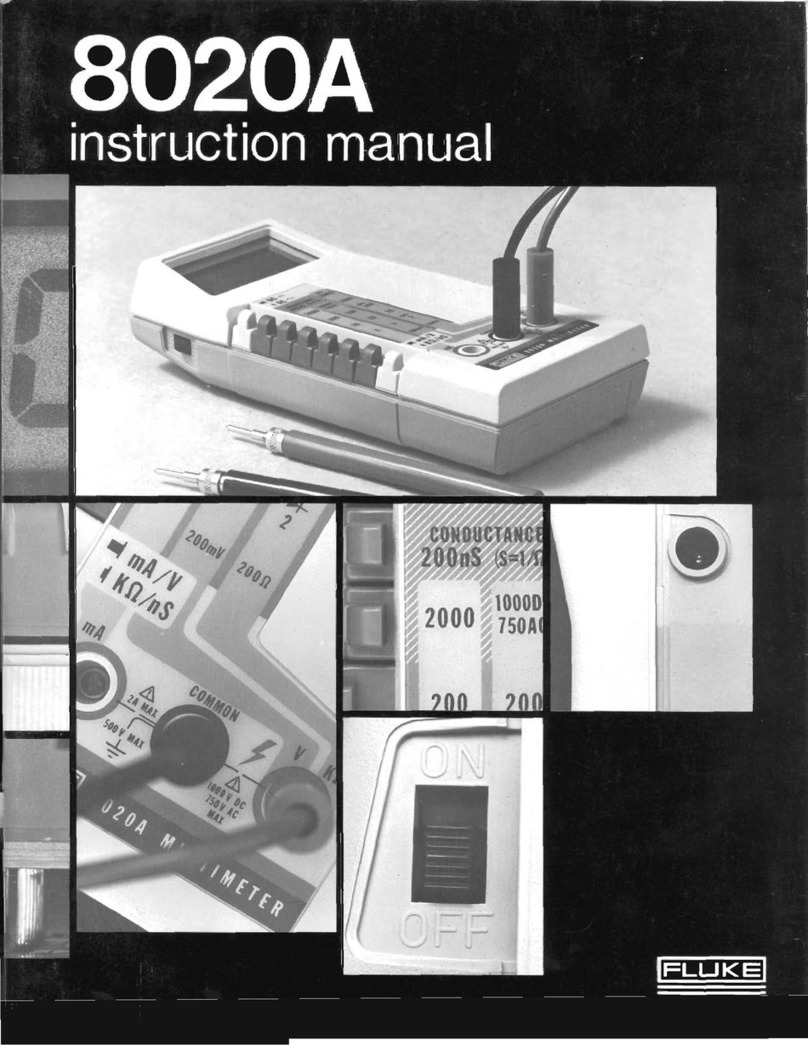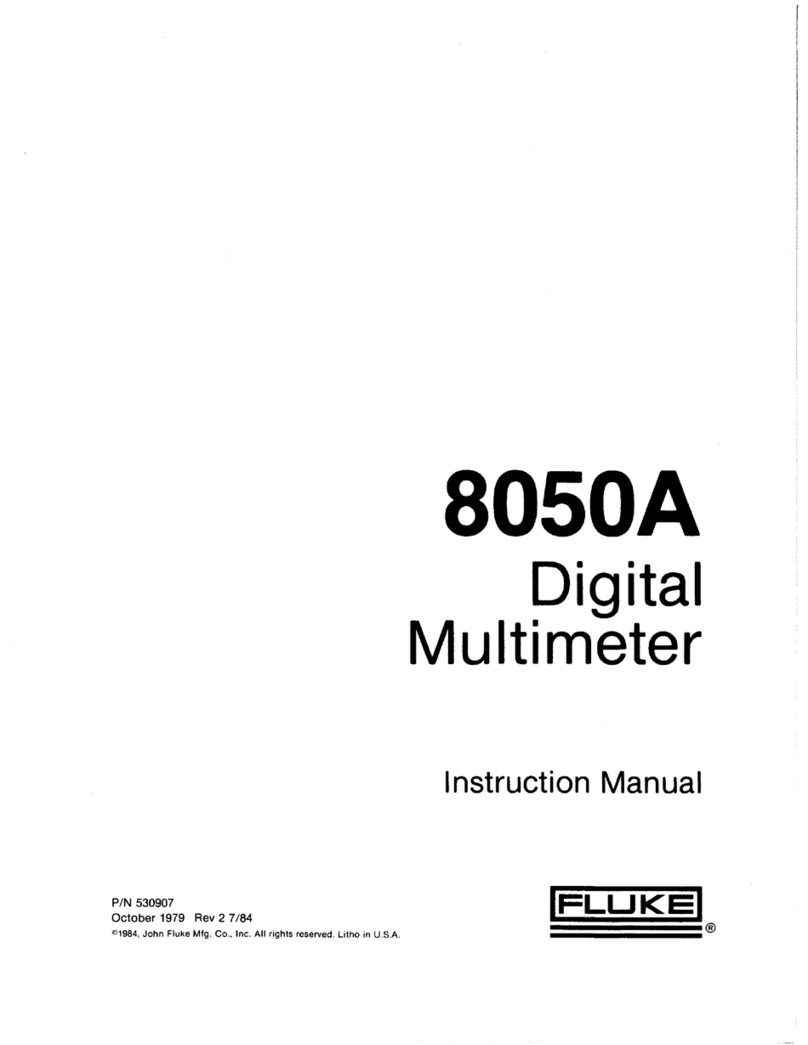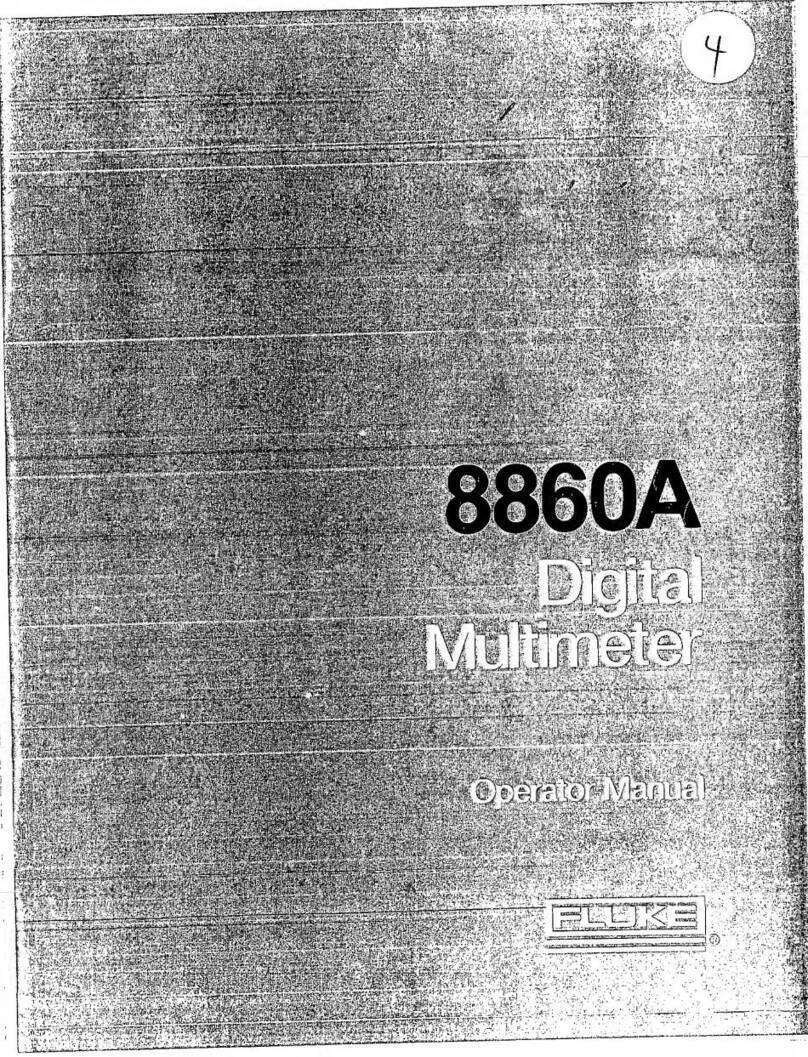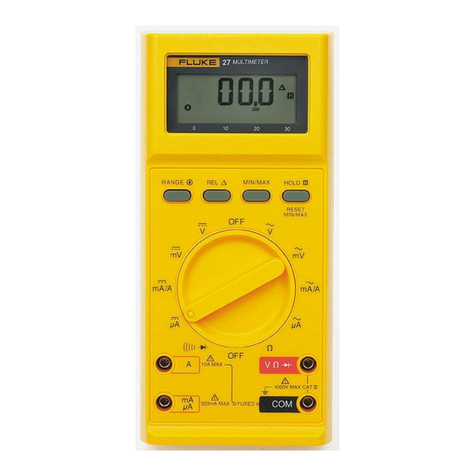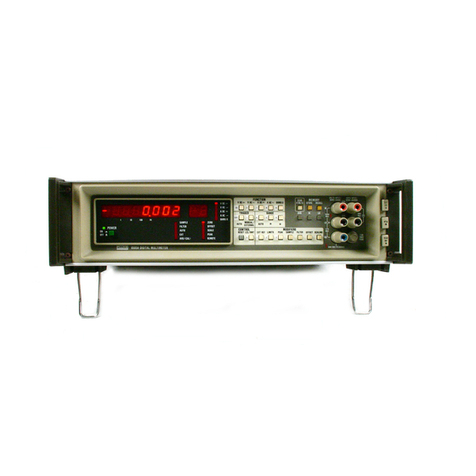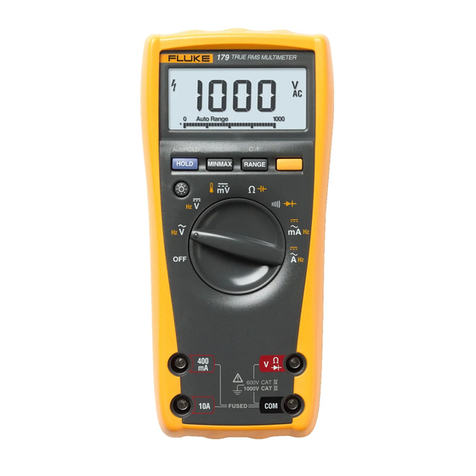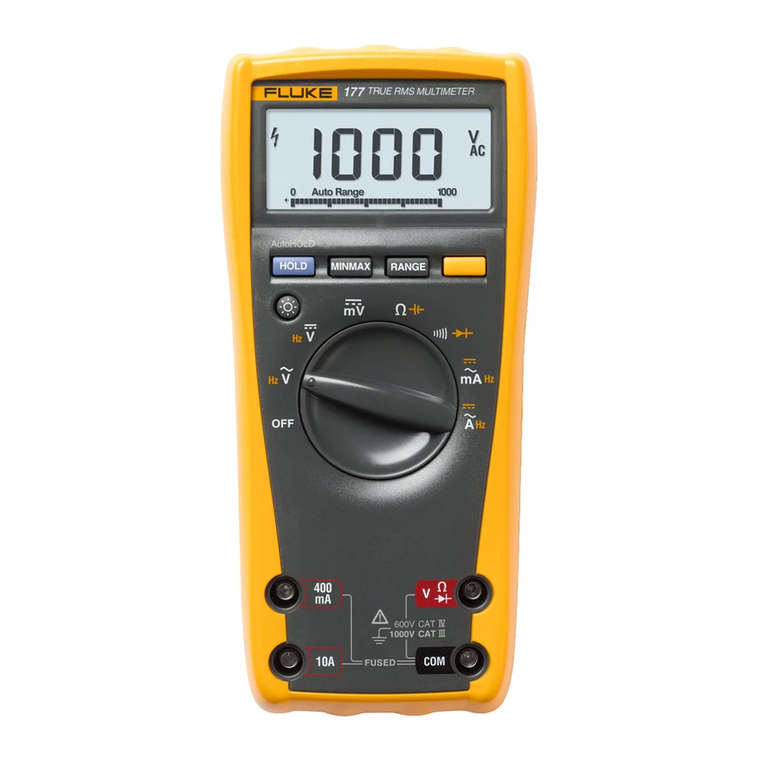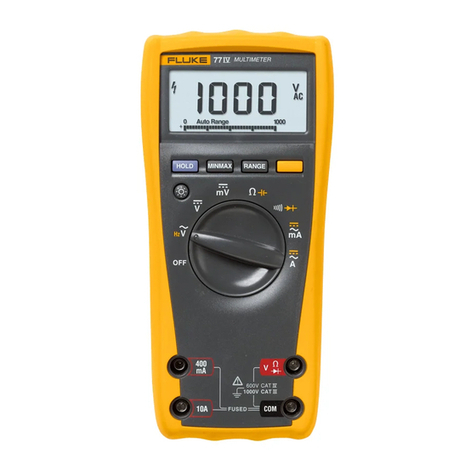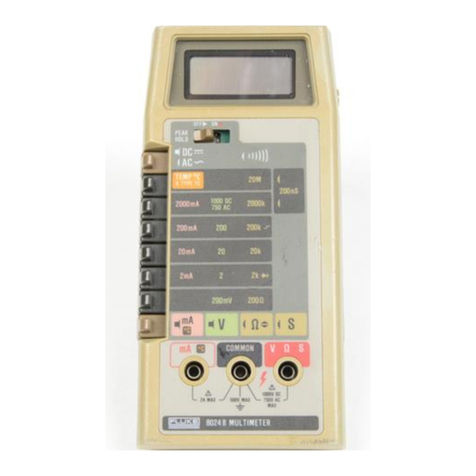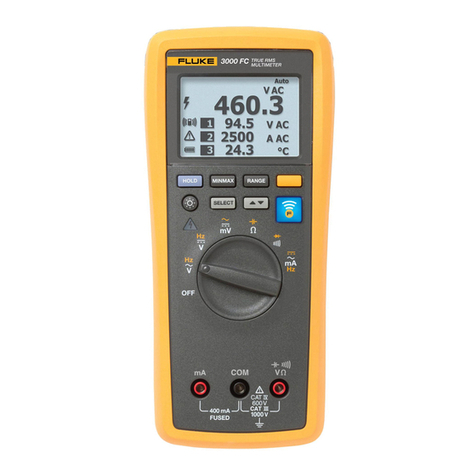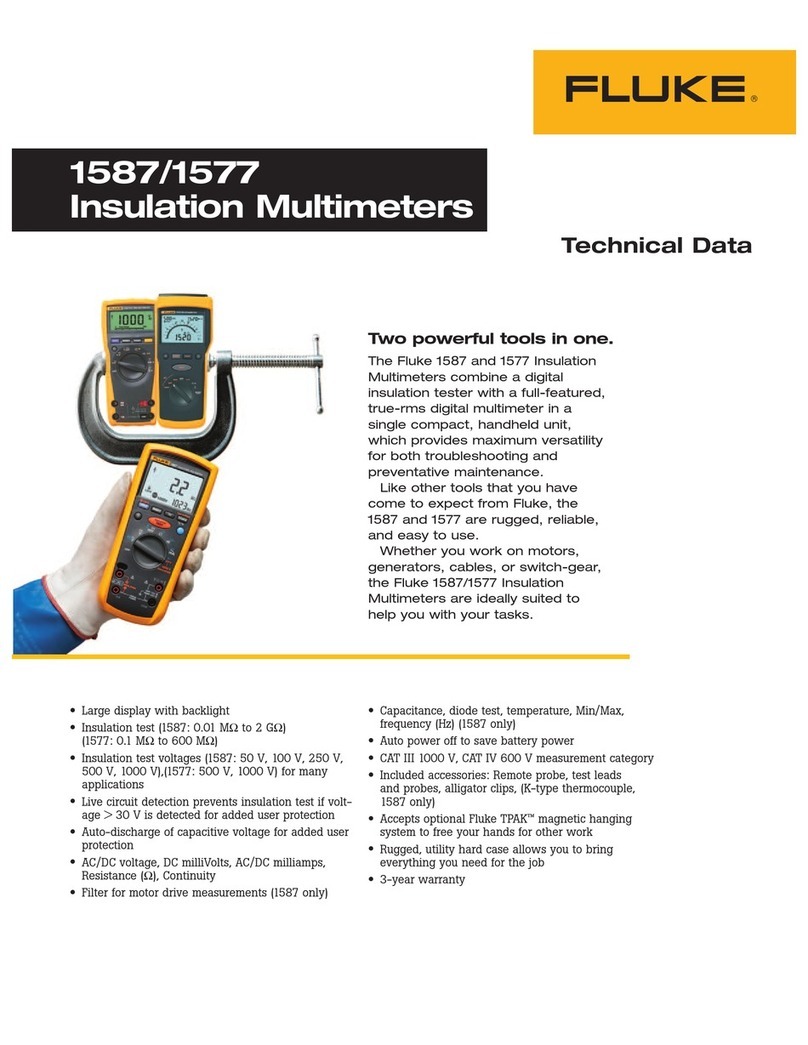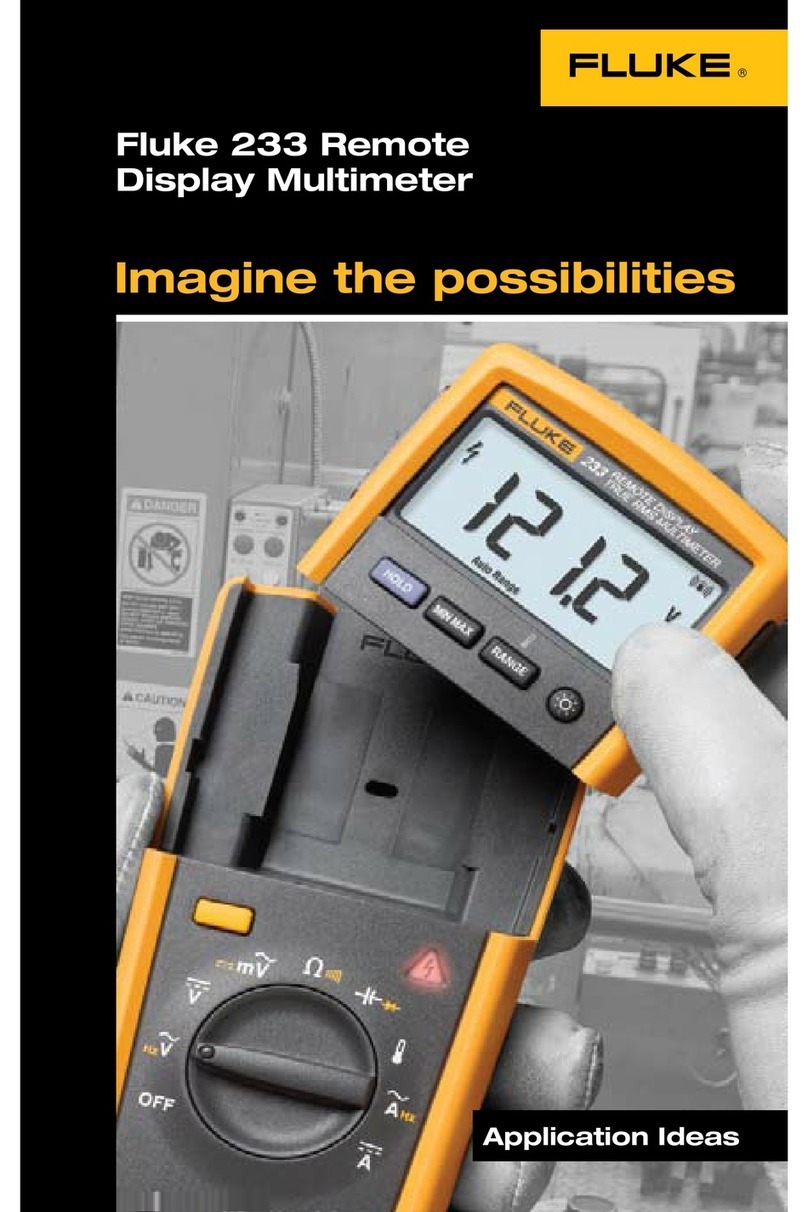
Digital Multimeter
General Specifications
5
General Specifications
Maximum voltage between any Terminal and Earth Ground: 1000 V
Display (LCD) ........................................................ 4000 counts, updates 3/sec
Battery Type .......................................................... 2 AA, IEC LR6
Battery Life ............................................................ 500 hours minimum (50 hours in LED Test mode without load. The
hours with load depends on the type of LED under test.)
Temperature
Operating ............................................................ 0 °C to 40 °C
Storage ............................................................... -30 °C to 60 °C
Relative Humidity
Operating Humidity ............................................. Non-condensing (<10 °C); ≤90 % RH from 10 °C to 30 °C; ≤75 % RH
at 30 °C to 40 °C
Operating Humidity, 40 MΩRange..................... ≤80 % RH at 10 °C to 30 °C; ≤70 % RH at 30 °C to 40 °C
Altitude
Operating ............................................................ 2000 m
Storage ............................................................... 12 000 m
Temperature Coefficient.......................................0.1 X (specified accuracy) / °C (<18 °C or >28 °C)
Fuse protection for current inputs...................... 440 mA, 1000 V, IR 10 kA min
11 A, 1000 V, IR 20 kA min
Size (HxWxL) ......................................................... 183 mm x 91 mm x 49.5 mm
Weight.................................................................... 455 g
Ingress Protection ................................................ IEC 60529: IP40 non-operating
Safety ..................................................................... IEC 61010-1: Pollution degree 2
IEC 61010-2-033: CAT III 600 V, CAT II 1000 V
Electromagnetic Compatibility
International ........................................................ IEC 61326-1: Basic Electromagnetic Environment: IEC 61326-2-2
CISPR 11: Group 1, Class A
Group 1: Equipment has intentionally generated and/or use
conductively coupled radio-frequency energy which is necessary
for the internal functioning of the equipment itself.
Class A: Equipment is suitable for use in all establishments other
than domestic and those directly connected to a low voltage power
supply network which supplies buildings used for domestic
purposes. There may be potential difficulties in ensuring
electromagnetic compatibility in other environments, due to
conducted and radiated disturbances.
Korea (KCC) ...................................................... Class A Equipment (Industrial Broadcasting & Communication
Equipment)
Class A: Equipment meets requirements for industrial
electromagnetic wave equipment and the seller or user should take
notice of it. This equipment is intended for use in business
environments and not to be used in homes.
USA (FCC).......................................................... 47 CFR 15 subpart B. This product is considered an exempt device per
clause 15.103.






